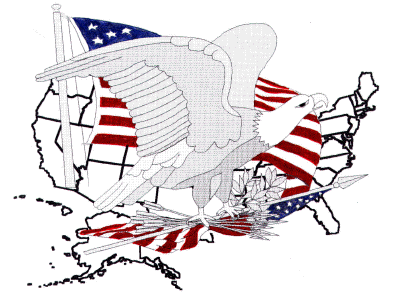
|
|
Propagation
Introduction
Radio waves, like light waves and all other forms of electromagnetic radiation, normally travel in straight lines. Obviously this does not happen all the time, because long - distance communication depends on radio waves traveling beyond the horizon. How radio waves propagate in other than straight-line paths is a complicated subject, but one that need not be a mystery. This page provides basic understanding of the principles of electromagnetic radiation, the structure of the Earth's atmosphere and solar-terrestrial interactions necessary for a working knowledge of radio propagation. More detailed discussions and the underlying mathematics of radio propagation physics can be found in the references listed under additional resources. The Sun, being the largest engine in our solar system, has a great effect on propagation as its "exhaust" interacts with our Earth's magnetic field. A rudimentary knowledge of sunspots, solar flares and mass ejections will help the amateur take advantage of these effects to enhance his pleasure, or understand his plight. A good basic understanding of this can be had by reading the article "The Sun, the Earth, the Ionosphere. See also the list of other articles on propagation. Additional information on this subject and related topics can be found in back issues of QST and the following: The ARRL has an extensive catalog of books and materials related to Amateur Radio. Articles:
Note: Some of the following articles are in Adobe Portable Document Format (PDF) files. To view and print these files, you'll need a copy of Adobe's Acrobat Reader program. (Version 3.0 or later required). More information here. What the Numbers Mean, and Propagation Predictions--a brief introduction to propagation and the major factors affecting it. By Carl Luetzelschwab, K9LA QST November 1992, pp. 80-82 The transitions from darkness to daylight and daylight to darkness cause drastic changes in the ionosphere. Use this to your DX advantage. QST October 1997, pp. 63-67 A Beginner's guide to meteor-scatter communication. QST October 1997, pp. 39-41 One of the world's leading ionospheric scientists explains the physics of sporadic E. QST November 1997, pp. 38-42 QST December 1983, pp. 11-15 Say it's 10 P.M. in Savannah, and you'd like to reach out and QSO someone in southern Europe. A solid knowledge of how signals travel will help you decide if you've got a fighting chance. QST, January 1985, pp. 31-33 QST, Lab Notes, October 1996, pp. 74-75 QST, November 1999, pp. 62-64 QST November 1991, pp. 20-25 W1AW broadcasts a weekly Propagation Bulletin. In this one the author gives a summary of what the numbers in a propagation forecast mean and how they are compiled. QST August 2003, pp. 36-39 Can amateurs cross the Atlantic on 133 MHz without satellites or moonbounce? QST September, 2002, pp. 38-40 When someone tells you that the flux is up to 200 and the K is 3, do you know what they are talking about? You will after you read this article! A Presentation to The Yankee Clipper Contest Club Feb. 1, 2003, Milford, CT, by Dean Straw, N6BV, Senior Assistant Technical Editor, ARRL A Presentation to The Yankee Clipper Contest Club, Feb. 1, 2003, Milford, CT, by Dean Straw, N6BV, Senior Assistant Technical Editor, ARRL Note:
Contact information for suppliers mentioned in the above articles should first be confirmed using TIS Address Database Search. Bibliography (Members Only)
ARRL Periodicals
Index Search - This database contains the QST index from 1915 to the
present and the QEX index from 1981 to the present. For QST issues
from 1970 to the present, and some selected articles back to 1922 (when
construction articles featuring tubes began in earnest), identifying keywords
have been added to the technical articles. By entering keywords (ANTENNA) or
combinations of keywords (CONSTRUCTION ANTENNA VERTICAL HF) into the Title
words: field, you may create dynamic bibliographies. Suggested keywords for more articles like the ones on this page are: PROPAGATION Web Links:
Propagation Reports & Forecasts:
Tutorials:
Software:
Article Reprints:
Note: Reprints are available from the Technical Department Secretary, ARRL, 225 Main Street, Newington, CT 06111. Article copies must be prepaid $3 for ARRL Members, $5 for non-members. You may order by telephone (860-594-0200) and pay by credit card. Reprints can only be sent by mail and cannot be sent by or attached to e-mail.
This information was prepared as a membership service by the American Radio Relay League, Inc., Technical Information Service, 225 Main St., Newington, CT 06111 (860) 594-0214. Email: tis@arrl.org (Internet). ARRL HQ is glad to provide this information on the Web free of charge as a service to League members and affiliated clubs. If you have any questions concerning the reproduction or distribution of this material, please contact:
|